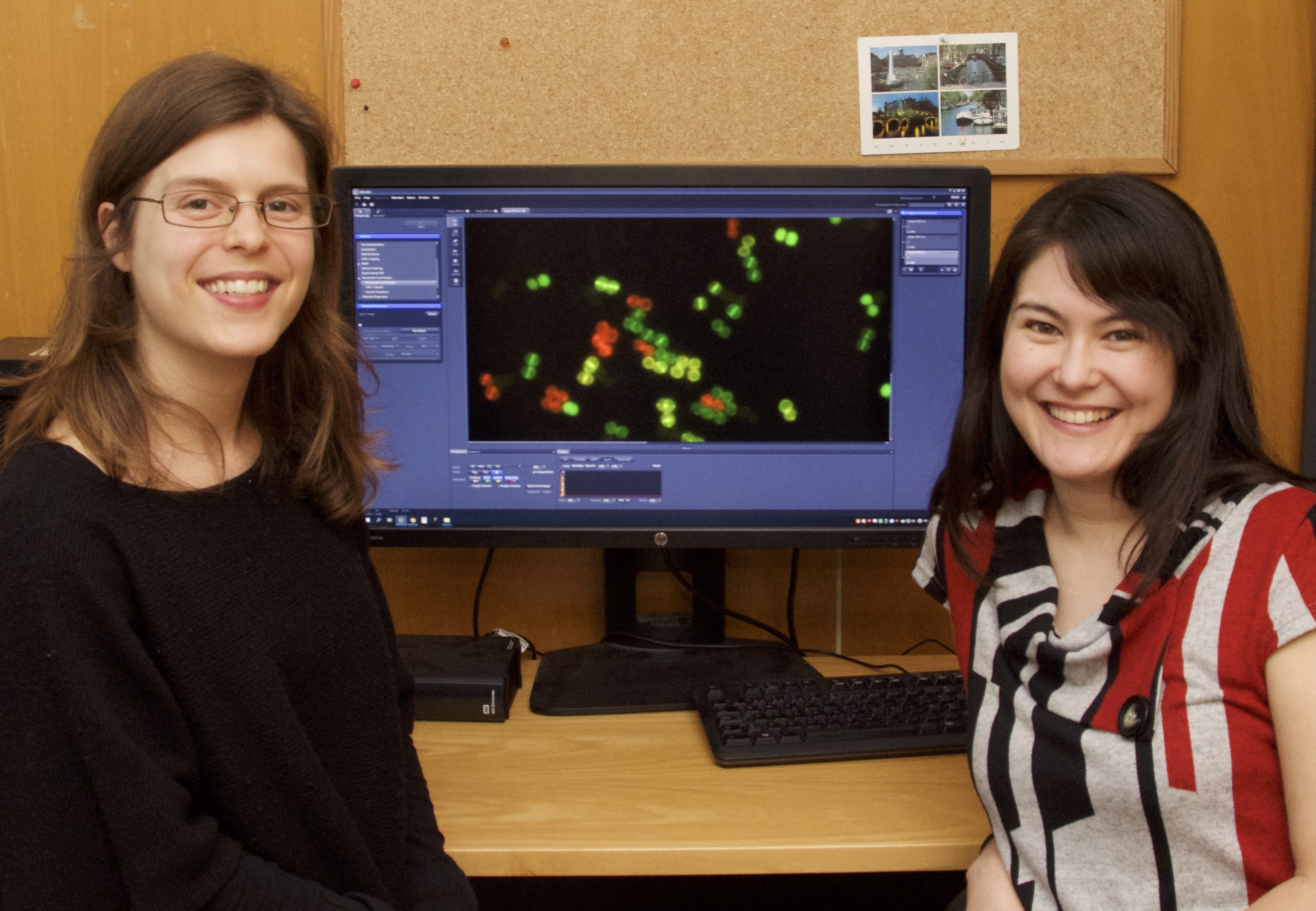Round and round we go
Oeiras, 13.05.2019
Bacteria are a very diverse group of organisms and they come in different shapes, like spherical (cocci) or cylindrical (rods). For many years scientists have thought that cocci lacked the key proteins that would allow them to elongate, but previously in Mariana Pinho´s Lab they have found that pathogenic bacteria Staphylococcus aureus cocci do elongate before dividing. Later, they have also shown that Staphylococcus aureus can be forced to elongate their round shape. Now, Nathalie Reichmann and Andreia Tavares, together with other members of Mariana Pinho Lab team, have been able to identify that S. aureus cells are equipped with some of the same mechanisms that control elongation in rods, mediated by the SEDS protein RodA - but while in rods RodA is responsible for making truly elongated cells, in cocci it is used for the brief elongation required before and after cell division. The results were published today in Nature Microbiology.
"Staphylococcus aureus cells are almost perfect spheres, and for years we thought that they lacked an elongation machinery. But they actually do have the same two SEDS genes as rods (rodA and ftsW). So we asked ourselves what does RodA, a protein required to make cylindrical cells, do in a non rod-shaped bacteria?", told us Mariana Pinho, principal investigator at Bacterial Cell Biology Lab and corresponding author. "What we found out is that S. aureus has two molecular machines for the synthesis of cell wall and that RodA is responsible for a phase of elongation, while FtsW is essential for division. It is fundamental to know the molecular mechanisms of growth and division of pathogenic bacteria, because in there can lie the key to fight antibiotic resistance". This work was developed under the scope of ERC Consolidator grant "Exploring the bacterial cell cycle to re-sensitize antibiotic-resistant bacteria".

First authors Andreia Tavares and Nathalie Reichmann, from Mariana Pinho Lab
Nature Microbiology | doi.org/10.1038/s41564-019-0437-2
SEDS–bPBP pairs direct lateral and septal peptidoglycan synthesis in Staphylococcus aureus
Nathalie T. Reichmann, Andreia C. Tavares, Bruno M. Saraiva, Ambre Jousselin, Patricia Reed, Ana R. Pereira, João M. Monteiro, Rita G. Sobral, Michael S. Van Nieuwenhze, Fábio Fernandes and Mariana G. Pinho*







